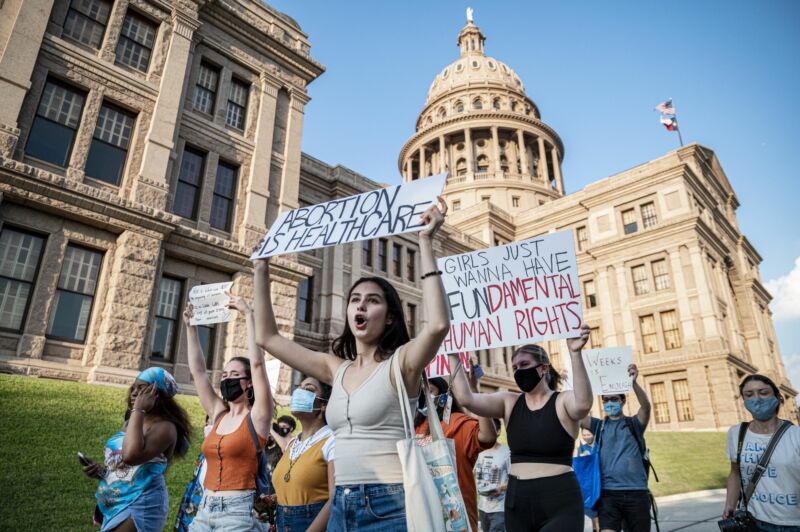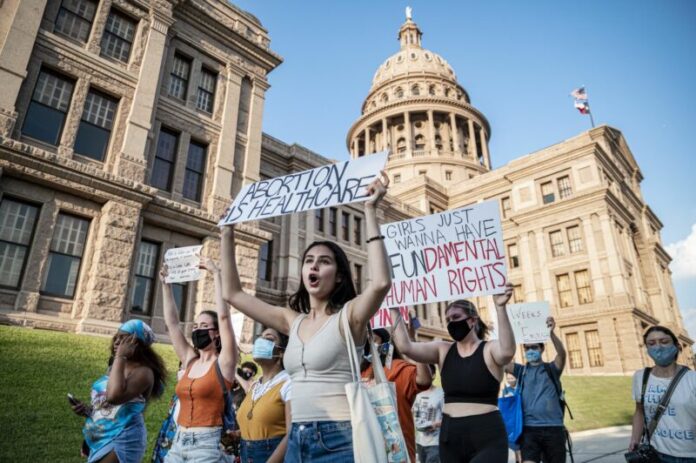
Enlarge / Pro-choice protesters march outside the Texas State Capitol on Sept. 1, 2021, in Austin, Texas. (credit: Getty Images | The Washington Post )
Fourteen states have banned abortions at any gestational age since the Supreme Court overruled Roe v. Wade in 2022. Since the enactment of those abortion bans, an estimated 64,565 people became pregnant as a result of rape in those states. But, while five of the 14 states have exceptions for rape, all of the states logged only 10 or fewer legal abortions per month since their respective bans were enacted.
The finding, published this week in JAMA Internal Medicine, is a stark look at the effects of such bans on reproductive health care. The study did not assess how many of the estimated 64,565 pregnancies resulted in births, but it makes clear that tens of thousands of pregnant rape survivors, including children, were forced to turn to illegal procedures, self-managed abortions, or burdensome travel to states where abortion is legal—cost-prohibitive to many—as an alternative to carrying a rape-related pregnancy to term.
It also showed that legal exceptions for rape don't work. The states with those exceptions apply stringent time limits on the pregnancy and require victims to report their rapes to law enforcement, which likely disqualifies most. The US Department of Justice estimates that only 21 percent of victims report their rape to police, for myriad reasons.
Read 7 remaining paragraphs | Comments
Ars Technica - All contentContinue reading/original-link]




